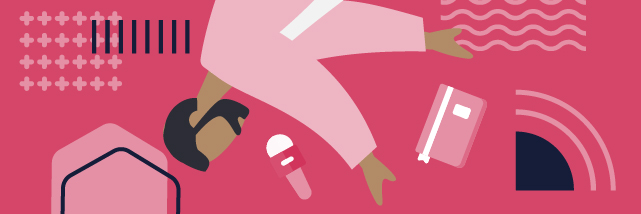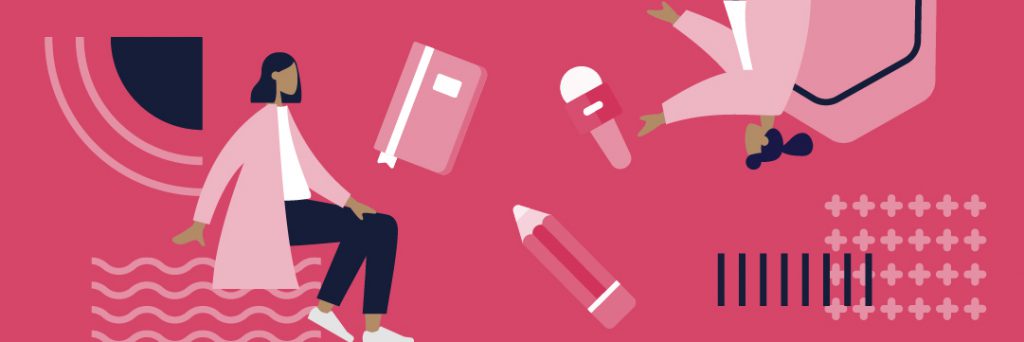Interviews are not always one-sided. When its about two people having a conversation – rather than one person interrogating the other – the involved parties stand to get more out of the interview.
A qualitative interview is an in-depth and personal interview that allows the participant to ask the interviewer questions as well.
Essentially, this type of interview works both ways, and this allows the both interviewers and interviewees to fully explore a certain subject or topic.
Here are other characteristics of qualitative interviews:
- The structure and direction of the questions can change; the participant determines what the follow up questions will be.
- There is no specific way of answering questions.
- The participant can answer in their own words and even speak more on points they find important.
Having understood this, you can see how it might be easy for a qualitative interviewer to get lost answering questions and miss out on fulfilling the objective of the session.
But its easy to fix this problem, and this article shows you how.
Types of Qualitative Interviews
Generally, there are three types of interviews; unstructured, semi-structured, and structured.
Unstructured interviews are relatively formless and include few (if any) pre-planned questions. It’s like a conversation where the researcher probes the participants to get in-depth information on a subject.
Semistructured interviews use a protocol to help guide the direction of the process. There are some conversation aspects, and the researcher can probe for more information, but most of the questions are guided.
Semistructured interviews offer a lot of flexibility, and there is little chance that the conversation will drift far away from the main topic.
Structured interviews are strict in their use of protocols.
The style is more rigid than the rest – the researcher only sticks to the questions defined on the interview protocol. With a structured method, you can target specific experiences or answers, but this limits the chances of exploring topics in depth.
Qualitative interviews usually take the unstructured or semistructured approach. Here are some more forms of qualitative interviews:
Ethnographic Interview
This type of interview is about spending more time in the field of study with your chosen group of participants.
The goal is to collect observational and demographic data from your subjects.
Ethnographic interviews can either be formal or informal.
Focus Group Interviews
In qualitative interviews, focus group are used to give insight into the participants’ values and beliefs about a particular topic.
Focus groups work best with topics that are not sensitive, and they are a great way to collect feedback from the participants.
Couple Interview
This is applicable when a child is being interviewed in the presence of a guardian who can direct them on what to say and how to answer the questions.
Couple interviews also apply to differently abled person who are interviewed with their caregivers.
Where to Conduct Qualitative Interviews
There is no specific setting where qualitative interviews are held. Depending on your budget and the availability of your participants, you can conduct your interviews in the following ways:
Telephone Interviews
These are appropriate for exchanging sensitive information and also convenient for participants whose schedules are a bit tight.
The downside is that some non-verbal information may be lost. Communication cues and body language are important aspects of interviews, and without face-to-face interactions, it gets difficult to determine how your subkect truly feels about a topic.
Walking and Talking
In this scenario, the interviewer spends the day asking the participant questions, listening and observing as they answer.
The subject could be walking, cooking, or doing a number of different activities when participating in the interview.
This type of setting allows the interviewer a glance into their participant’s life.
E-interviews
As the name suggests, this qualitative interview takes place on an online platform. The only requirement with this is that both the interviewer and the participant need to have the necessary software and devices needed to access the interview.
Self-interviews
In this type of setting, the interviewer is absent and the participant is given an outline of the questions they should follow.
This allows the interviewee time to reflect on their answers. It also allows the subject freedom to choose when to talk and for how long without the pressure of having an interviewer present.
In this setting, the interviewee records themselves – and the records are called audio diaries.
Why Conduct a Qualitative Interview?
These interviews provide more opportunities for exchange of valuable information between different parties.
Since they are usually unstructured or semistructured, there is no telling where the general direction of the interview is headed to.
Qualitative-style interviews are important for the following reasons:
- They help us understand the plight of different people and get a glimpse into their situations.
- The interviews are a great way to start the ‘hard’ and emotionally provoking conversations that we do not touch on in the convectional spaces.
- Through qualitative interviews, we get to learn about how people see the world and how they talk about certain issues.
- Qualitative interviews allow us to extensively learn about specific topics.
Qualitative Interview for a Business
Market and product research phases could benefit from qualitative interviews. Brands that seek to understand the position of their customers better could adopt this style and get as much information as they can from the participants.
Qualitative interviews can benefit your business in the following ways:
- Helps you understand the needs of your customers.
- When you want to get opinion or feedback on a new product that the company is launching.
- As a way of generating new ideas from the participants on how they could improve a particular product.
- To get opinions on how your products are affecting your customers’ lives.

Remember to have an Interview Guide
This will act as your to-do-list for the interview.
In as much as there are limited restrictions to the topics you can discuss and the questions you can ask, all interviews have limits and objectives.
Don’t get so caught up in the conversation that you forget to ask all the important questions.
You can refer to an interview guide during the session to ensure you stay within the objective of the project.
What makes a good interview guide?
- It states the objective you want to achieve with the interview.
- The guide should have an outline of some questions the interviewer things are important.
- Note down the number of participants you want to interview.
Techniques to Apply During a Qualitative Interview
Qualitative interviews rarely have structured questions, but this doesn’t mean that they cant have a general plan of action.
Interview guides are important because they keep you from drifting too far off.
Tool Used for Qualitative Interviews
During an interview, you need a way to encourage your participants to talk. You can do so in the following ways:
Talking
This is the basic exchange of information between the interviewer and the participant. The interviewer follows a given guide of questions, and can conduct the interview over the phone o face-to-face.
Writing
Written texts can be used to stimulate the discussion during a qualitative interview.
Seeing
This is where the researcher uses images to facilitate a conversation. These can be in form of graffiti, film clips, advertisements or paintings.
Images are said to evoke deeper human emotions, which gives the interviewer different type of responses than text and talking would.
Here are more techniques that will ensure you get the most out of your interview:
Avoid questions that have a yes or no answer
Rather, you should ask questions that invite longer answers from your participant. If you really have to include the closed question, follow it up with another question so you get the most content before moving on.
It’s not an Interrogation
Interviews were traditionally conducted like interrogations. They were rigid and stiff and made some participants feel like they were in a jail cell.
Qualitative intervews are different, but they can still sound harsh if the researcher is not careful.
Follow up questions like why may come off as confrontational and hostile to the participant. Instead you can ask, “could you tell me more about that?”
Don’t Lead the Participant
Remember, a qualitative interview is about asking open-ended questions and letting the subject answer however they can. Leading questions might cause the subject to change their answer and instead tell you what you want to hear.
Instead of asking,“Do you think people who don’t read books are just lazy?” You could ask this: “What do our think about people who don’t read books?”
Try to keep your questions open-ended. The objective of a qualitative interview is for the participant to share their information with you in their own words.
Actively Listen to your Subjects
This goes without saying, but when it comes to qualitative interviews you should fully pay attention and apply active listening skills. These include making eye contact, leaning in, using verbal affirmations and sometimes avoiding eye contact.
Pay Attention to Body Language
When conducing a face-to-face interview, watch out for the participant’s body language.
It’s possible for a subject to be saying something while their body language says something completely different.
Most people communicate more with their bodies than with words, so you really have to be keen.
Also, acknowledge the participant’s emotions.
This will make them feel seen and heard which will make them more comfortable around. Qualitative interviews are all about establishing good rapport with your subject. Setting up a friendly environment where they feel free to speak will make your participants open up more.
Documenting Your Interview
Before conducting a qualitative interview, the interviewer should come up with a way to collect and store the information.
You can record your interview digitally, or take notes manually.
Recording is the recommended way as it allows the interviewer to give their full attention to the participant.
However, some participants may not like the idea of being recorded, particularly when they are sharing sensitive information
If you decide to take notes, you must be able to balance between writing notes, asking questions and actively listening to your subject.
Whatever method you choose, you should always prepare prior to the interview.
You can even decide to hold a mock interview just to see if you are ready for the real thing.
The Importance of Journaling
Journaling comes in handy when a participant introduces a new term or concept that the interviewer has not heard before and needs to research on it.
It is human nature to forget, so note everything down. If any changes are made, write why. It will save you a lot of time and effort in the future.
Drawbacks of Qualitative Interviews
As with all other types of interviews, qualitative research has some challenges:
It can be quite expensive to conduct qualitative interviews.
A lot goes into preparing for a qualitative interview – drafting an interview guide, identifying a subject, getting them to the location, conducting the interview, and documenting the results – and that is just the tip of the iceberg.
Afterward, you may have to transcribe your interview so it is accessible to people.
Qualitative interviews can be emotionally exhausting.
Qualitative research is about diving deeper into the subject. Interacting with people on a personal level and getting to know the challenges they face daily can weigh on an interviewer’s emotions.
For this reason, researchers are always advised to maintain objectivity.
Conclusion
To make the most out of a qualitative interview, start with an interview guide.
You should also pay attention to the body language of your participants, and try not to lead your subjects into the direction you feel they should go.
Lastly, don’t forget to transcribe your content so it’s easier to share and upload to different platforms.
When in doubt, don’t hesitate to reach out to the expert transcribers on Bunny Studio.










